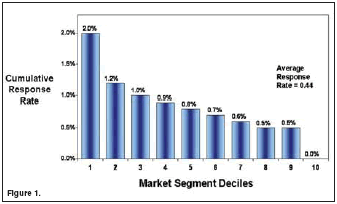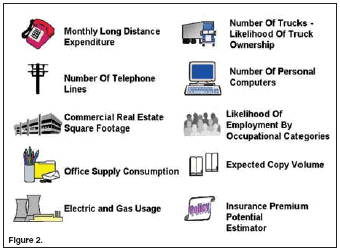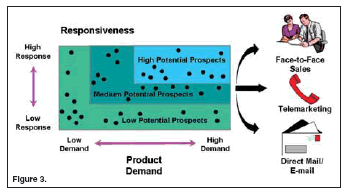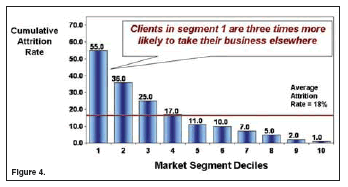|
|
DSC Tech Library
Customer Call Centers
 This section of our technical library presents information and documentation relating to Call Center technology and Best Practices plus software and products.
Since the Company's inception in 1978, DSC has specialized in the development of communications software and systems. Beginning with our CRM and call center applications, DSC has developed computer telephony integration software and PC based phone systems. These products have been developed to run on a wide variety of telecom computer systems and environments.
This section of our technical library presents information and documentation relating to Call Center technology and Best Practices plus software and products.
Since the Company's inception in 1978, DSC has specialized in the development of communications software and systems. Beginning with our CRM and call center applications, DSC has developed computer telephony integration software and PC based phone systems. These products have been developed to run on a wide variety of telecom computer systems and environments.
The following article presents product or service information relating to call centers and customer service help desks.
Using Business-To-Business Predictive Modeling To Your Advantage
What You Didn’t Know You Could Do With Your Business Data:
Using Business-To-Business Predictive Modeling To Your Advantage
By Jan Rowland, Ph.D., D&B Sales and Marketing Analytics
Marketing professionals are expected to grow revenue by acquiring new prospects, quickly converting them into sales, and then expanding and growing the relationship. However, with marketing costs continuing to rise, budgets remaining stagnant or declining, and increasingly low response rates, it is more difficult than ever to meet objectives.
By applying marketing analytics to the wealth of internal and external business data, marketing executives can execute information-driven marketing strategies that drive better results along each stage of the customer life cycle.
One of the most common approaches to developing new customer relationships is to overlay customer lists with business attributes such as geography, industry or employee size. This information provides important insight, such as a description of key customer segments. This type of insight also improves marketing execution.
Telemarketing campaigns can be directed to prospects that most resemble a company’s best customer segments. However, given the vast number of direct marketing calls targeted toward these prospect businesses, it is critical to ensure the corporate message is heard. The challenge is figuring out how to make this happen.

The answer to this problem is to combine existing customer information with critical external firmographic information (see Figure 1). Marketing analytics and statistical models enable companies to churn through this information and turn it into business insight that will help achieve revenue objectives. In fact, by applying marketing analytics to the wealth of internal and external business data, marketing executives can execute information-driven marketing strategies that drive better results along each stage of the customer life cycle.
The Dangers Of Using Inaccurate Or Incomplete Data
The foundation of successful information-driven marketing strategies are complete and accurate data. The quality of customer and prospect information directly impacts how targets respond to the offers being made. To ensure the highest level of data quality, there are four pillars to managing and analyzing data that must be achieved:
Data collection. Companies must start with complete, accurate and timely information about their customers and prospects. The most up-to-date contact information is a requirement for high response rates. Beyond contact information, though, complete firmographic information (shown in Figure 1) and anticipated buying behavior drawn from multiple sources of data improve conversion rates and provide access to new prospects. Receiving this information in a timely manner, particularly information about new businesses, enables a company to capitalize on new marketing opportunities. Finally, keeping up-to-date on the latest business changes among customers and prospects helps time the telemarketing campaigns for when prospects are most ready to buy. For example, knowing that a business recently moved into a larger space could trigger an offer for new office furniture, computers or telephone services.
Matching. Once this vast array of business information has been collected from multiple data sources, it needs to be integrated. Accurate matching is vital to success in a variety of ways, as it helps companies do the following:
- Avoid calling the same business multiple times, by identifying and consolidating duplicate business records;
- Precisely append new data or changes in data to existing customers, including a change of telephone number; and
- Provide a more complete multifaceted profile of the customers and prospects.
Unique identifier. Assigning a unique identifier provides a means to track customers over time and to merge information on buying behavior collected across the many divisions of an organization. A unique identifier also helps to match customer records across multiple systems and to update records with new data from outside sources. With information changing so rapidly, a unique identifier improves the ease and accuracy of data processing. This identifier should be as unique as a Social Security number.
Corporate linkage. With plenty of fresh information connected to the right business, the ability to cross-sell customers and target prospects for new business is greatly enhanced. The opportunities don’t stop there. Companies can leverage the unique identifier to link seemingly separate businesses, enabling full understanding of a customer’s entire corporate family, revealing the total revenue and exposing significant new growth opportunities.
To avoid tying up critical resources and funds to direct the data collection process and establish these four quality pillars, an effective alternative is to partner with a business that has already established a data quality center of excellence.
These four pillars of data quality are the foundation for successful information-driven marketing strategies. Predictive models are only as accurate as the data they are built on.
Marketing Analytics Drive Business Insight
Marketing analytics are based on statistically valid algorithms that find the optimal combination of business characteristics to identify the best customers. It starts by combining internal customer information (what they buy, how much they buy, when they last bought, etc.) with associated external business information (see Figure 1). Statistical techniques then identify the pattern of business attributes that are most highly correlated with the events a company is trying to predict, such as the likeliness to buy additional products, expected profit over time or likelihood of attrition. These analytics are personalized to reflect a company’s specific product offering, industry dynamic and market channel. The result is a unique score applied to each customer or prospect, used to sort leads from highest to lowest potential.
Targeted Acquisition Programs
Marrying quality information with marketing analytics helps acquire new businesses by expanding markets, by identifying profitable business prospects and by maximizing telemarketing response rates.
While there is greater awareness among business marketers about the power of response models to help maximize sales and marketing dollars, the demand estimators and business clusters are extremely powerful tools to help further refine prospect lists and marketing strategies. Demand estimation models identify prospects with the greatest consumption for a specific product or service. Business clusters provide a deeper understanding of specific segments and are employed to create personalized messaging.
Maximize Sales And Marketing Dollars With Response Models
Response modeling is a well-known best practice for target marketing. Response models are statistical algorithms that summarize the diverse set of business attributes into a single number that represents the probability of a business responding to a direct marketing campaign.
Industry best practices enhance traditional response models in two ways. First, response models should be developed with a focus to predict the market’s receptiveness to specific product offerings, type of promotion and market channel. For example, you should have separate models for your telemarketing campaign and your direct mail promotion to ensure you can align your prospects to the best channel. Second, continuously feeding campaign results into the model is critical to ensure optimal performance, as offers and competitor offers change over time.

Figure 2 represents an example of an office supply company that used a response model to help the company improve its selection of 500,000 business prospects it would like to mail. The marketing manager wants to maintain the size of the company’s prospect list but improve its ROI through increased response. The response model identified segments with response rates that were four times higher than average, or two percent compared with 0.5 percent.
Prioritizing Prospects With Demand Estimators
The second best practice to enhance target marketing and to maximize sales is an analytical technique called demand estimation. Demand estimators are a great way to further refine marketing lists by targeting and selecting companies with a strong demand for a specific product or service. Additionally, demand models are excellent resources to help retool multichannel strategies. The insight gained regarding potential purchase opportunities can be used to identify the best prospects for a sales force, telemarketing or direct mail campaign.

Demand models are available in two flavors: standard models, which are already built from business bureau data, and custom models, which are built using customer information to define the predictor. Examples of standard demand models are shown in Figure 3. Demand models can add to list selection criteria; for example, how much a business spends on long-distance phone service, how many PCs a prospect has or how much the company consumes in office supplies. If none of the standard demand estimator selectors are appropriate, companies can work with a vendor to develop custom demand models that will predict unique products.

Leading edge direct marketers are combining the power of response models and demand estimation models to develop the most effective multichannel strategies. In Figure 4, the “high potential prospects” represent prospects with both a high likelihood to respond and a high demand for a specific product or service. A company would likely assign these profitable prospects to its best channel, such as the direct sales force. The next segment of “medium potential prospects” includes leads with the next highest response and demand potential. To manage costs and to maximize marketing ROI, a less expensive approach to acquiring these accounts could be used, such as telemarketing or mail.
A Deeper Understanding Of Who Buys
The third and most valuable best practice to acquire new customers is the use of business clusters. Business clusters are extremely useful in the following situations:
- A company launching a new product or service, therefore having no experience in identifying the business segments that would be the best prospects;
- A company expanding into new markets and, as a result, cannot simply profile existing customers and select prospects that look like best customers; and
- A company that would like to develop a deeper understanding of its prospects to tailor communications and promotional offers to the business’ specific interests.
Increase Profitability With Existing Customers
Existing customers are the best prospects for enhanced products and new services because they have already been sold on the value of your company. But some customers have a greater proclivity to remain and buy additional products than others. How do you identify loyal, high growth customers?
One of the easiest and most underused approaches is cross-sell modeling. Using a suite of products or product upgrades, cross-sell models enable companies to pinpoint existing customers with a propensity to purchase additional products or services. By contrast, lifetime value models more holistically identify profitable customers by evaluating the entire relationship across products and over time, while retention models focus on accounts with a high likelihood of leaving.
Interestingly, the greatest impact and success on growing customers occurs by using these models in a coordinated fashion.
Identifying Untapped Potential With Cross-Sell Models
Take this scenario: a large telecom company is experiencing low penetration of its technologically advanced products. Because these products have higher profit margins, the telecom company decides to conduct a telemarketing campaign targeting its existing customers to improve penetration. A cross-sell model is developed to pre-qualify leads for its telemarketing team by identifying customers who are most likely to need the more sophisticated telecom equipment.
The cross-sell model identifies business segments that are six times more likely to purchase the advanced telecom products. Before using the model, the average cross-sell penetration was about two percent. After the model is implemented, the client identifies segments within its customer file that had projected cross-sell rates of 10 percent and 15 percent. The cross-sell model provides the knowledge to direct efforts to the right customers in order to achieve maximum results.
Reduce Retention Costs By Targeting Customers Most Likely To Leave
Analytical tools can also help retain customers. The strength of retention models is driven by a combination of external business factors and information from your customer file. The model built for this consulting firm uses external factors such as industry, geography and number of employees, as well as internal data such as length of time as a customer, billings or revenue and the type of consulting contract. The ability to quickly identify which customers are likely to leave is powerful, particularly if the company would like to develop a retention program to increase the chances that these customers continue to purchase its products and services.
Information-Driven Marketing Strategies = Profitable Sales And Marketing Efforts
Never before has the need for a deep and personal understanding of business customers and prospects been greater. The success of marketing campaigns is dependent on the relevancy of the communication and on the ability to gain the customer’s attention. As the marketplace becomes more and more crowded, marketers are increasingly turning to predictive modeling as their competitive advantage. Analytics empowers marketers to convert readily available data about customers and prospects into important knowledge that translates into higher profits.
Predictive modeling improves campaign ROI, whether you are acquiring new customers or growing your relationship with existing customers. So reach out to statisticians within your organization or to a vendor to extract the full power out of your customer data.
Jan Rowland, Ph.D. is vice president of D&B Sales and Marketing Analytics (www.dnb.com/us/).
|


 This section of our technical library presents information and documentation relating to Call Center technology and Best Practices plus software and products.
Since the Company's inception in 1978, DSC has specialized in the development of communications software and systems. Beginning with our CRM and call center applications, DSC has developed computer telephony integration software and PC based phone systems. These products have been developed to run on a wide variety of telecom computer systems and environments.
This section of our technical library presents information and documentation relating to Call Center technology and Best Practices plus software and products.
Since the Company's inception in 1978, DSC has specialized in the development of communications software and systems. Beginning with our CRM and call center applications, DSC has developed computer telephony integration software and PC based phone systems. These products have been developed to run on a wide variety of telecom computer systems and environments.



